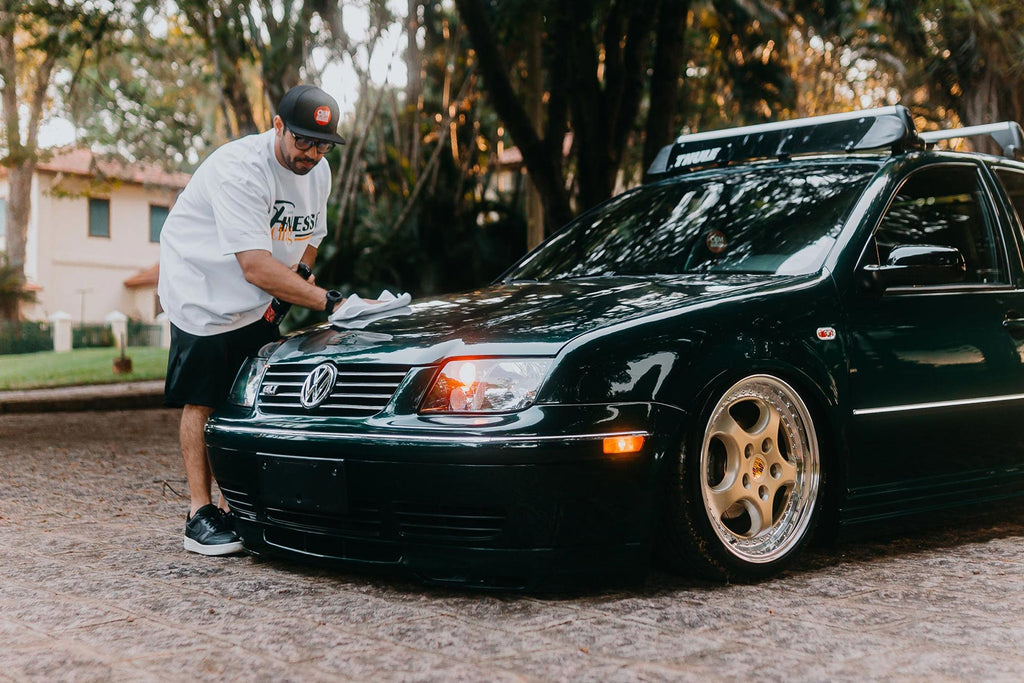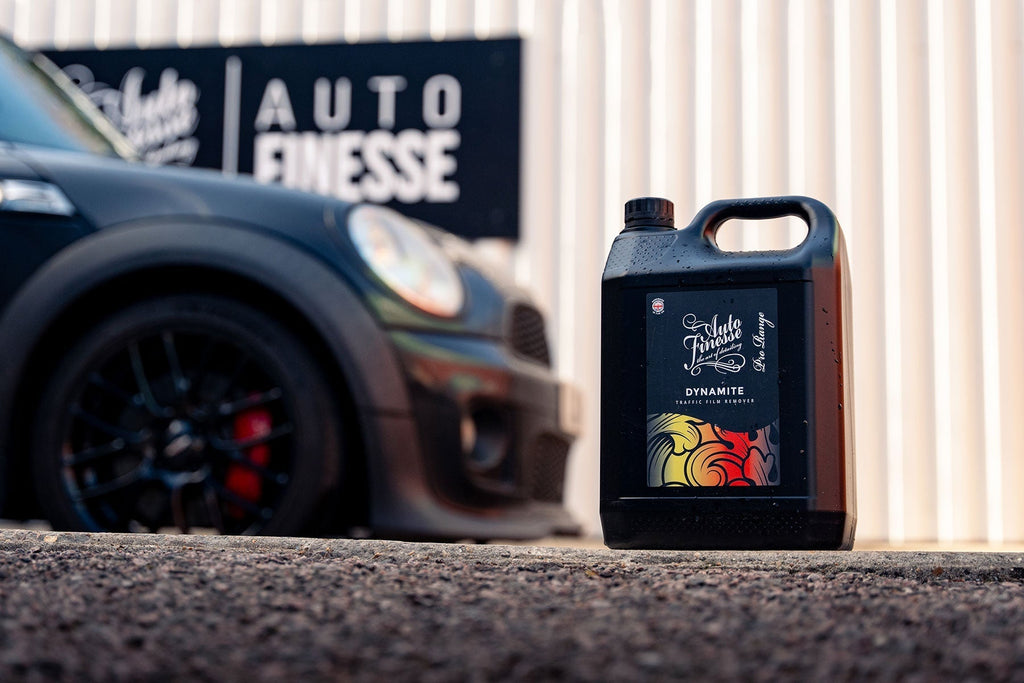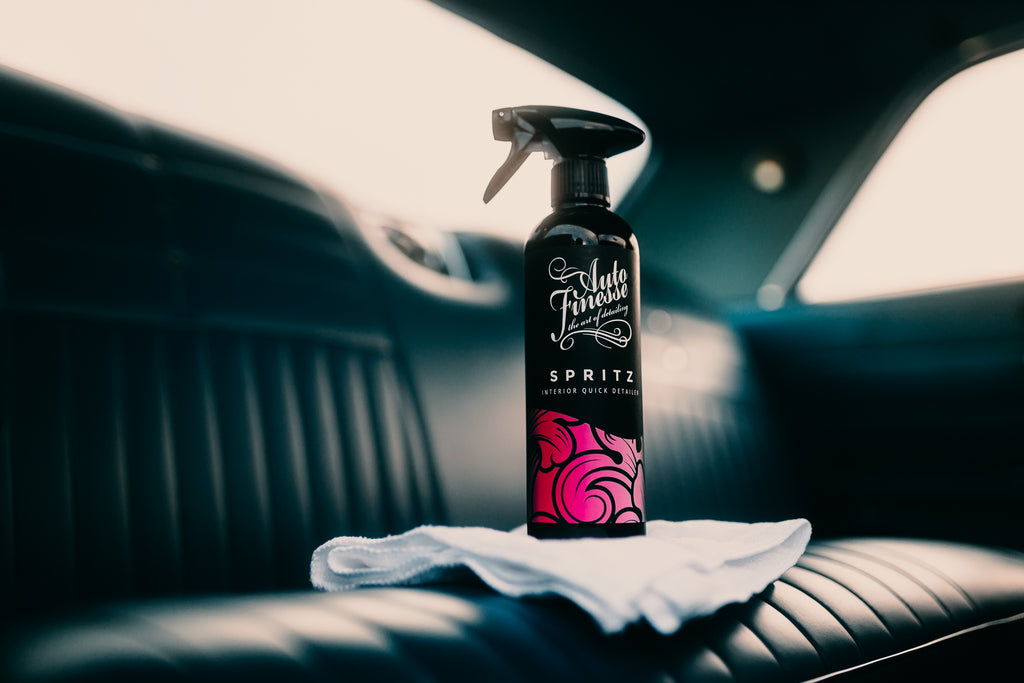How To Restore & Protect Carbon Fibre

IN THIS FREE GUIDE:
- Learn how to bring tired, cloudy carbon fibre parts back to life.
- See the easily-applied protection you need to keep your parts looking better than new for longer.
- Master every process from decontamination, to polishing and ceramic coating with our step-by-step guide.

WHAT ARE THE BENEFITS?
- Restoring your parts at home will save you a huge amount on professional re-sanding and clear coating.
- These processes can be easily applied to any carbon fibre part using just two or three top products.
- You'll not only enhance the look of your vehicle, but protect your carbon fibre from future fading and oxidisation.
FROM A QUICK ENHANCEMENT TO FULL-ON RESTORATION, WE'VE GOT YOU COVERED…
Slick, shiny carbon parts and performance cars go hand in hand, but there's one thing that's all too common when it comes to aftermarket (and even the odd factory) add-on, they seem to be a bit too susceptible to deterioration and UV fading.
In fact, cloudy, yellowing carbon parts are a common sight on the road, but contra to popular belief, in most cases these can be fully revived without the expense of re-sanding and clear-coating. If there's no lacquer peel, it's much more a case of choosing the correct abrasives. After that it's all about protecting the carbon properly, which is equally as simple when you know how.
Here's how to do the job the easy way, with two or three rather special products…

WHY DOES CARBON FIBRE FADE?
The truth is that the actual carbon weave isn't the problem, the dull, cloudy look most associated with faded carbon will almost always be the resin layer over the top.
The vast majority of aftermarket parts, whether they're entirely carbon or simply carbon "skinned' fibreglass, are finished with gel coat - essentially a shiny modified epoxy resin used on the surfaces that are seen. If left unprotected, as they often are, gel coat is extremely susceptible to UV fading and oxidation, and the effects of heat (particularly on bonnets) also helps create a milky mess.
Rapid deterioration and surface etching is also caused by environmental elements such as tree sap, bird droppings and bug splatter. Gel coat isn't as hard as the clear coat you'll find on your paintwork so, without ample protection, can deteriorate surprisingly quickly.
To help combat this problem, OEM parts and the highest quality aftermarket parts are often finished with lacquer (clear coat) for longevity. These rarely suffer from the degree of deterioration you'll see with bare gel coat, but just like your paint, will still need a good degree of protection to stand up to environmental elements.


RESTORATION AND PROTECTION PRODUCTS
There's two considerations before you start, these are the level of restoration needed, and what final protection you'll be using (dependant on the construction of your parts).
By far the best way to add durable protection on any carbon fibre part is with a ceramic coating. When it comes to gel coat finishes, it's actually essential to use a coating to create a hard barrier to protect from UV radiation and the elements. For this process, all you'll ever need is our easy-to-apply Caramics Paintwork Protection Kit.
For clear coated parts, it's still advisable to use a hardcore ceramic coating of course, but because the makeup is more like paintwork, you can also wax-based protection can also be effective. This is not just particularly useful if you're regularly waxing the rest of the car but, most importantly, it also means that for restoring light defects and quick enhancements you can utilise Tripple All-in-One Polish, which will remove oxidation and light swirls, it also contains carnauba wax to leave behind a warm glow.


For restoring seriously discoloured, cloudy gel coat parts though, a heaver abrasive will be needed to cut back the surface, and as you should be applying ceramic protection later, the product you use needs to contain no waxes or fillers that will block the ceramic resin in the coating from bonding.
One Step All-in-One Compound is the perfect choice for this job because what it gives is the true finish. It's formulated to contain special diminishing abrasives, which essentially means it starts off as a coarse cutting compound, and as you work the product through, it finishes down to a fine finishing compound, without the need to change product. After using One Step to fully restore your carbon, you can move straight on to adding Caramics Protection.
In the same way, our Revitalise System compounds contain no waxes or fillers and can be used here. You'll find these particularly useful for lighter defects where the coarsest compounds aren't needed.

DO IT THE AUTO FINESSE WAY…
To fully demonstrate the process, we drafted in a car with a bonnet showing the most serious of problems. This heavily faded, oxidised panel may seem intimidating, but following the correct processes, it's remarkably easy to rectify.

It's worth noting too, that all of the stages that follow can be applied to any gel-coated or clear coated parts, and adapted using our DPX Dual Action Polisher and full size Revitalise Pads, or our MPX Dual Action Polisher with Revitalise Spot Pads for smaller parts and panels.

STAGE 1 - PREPARATION
First, and perhaps most obvious, you need to make sure the part is free of grime and contamination, this requires washing thoroughly (using the usual pre-wash and contact processes) followed by decontamination using a Clay Bar or Clay Pad and Glide Clay Lube. This is a vital step needed to prepare the surface for compounding, and the idea is that you clay pulls any embedded contaminants out so they can't interfere with the polishing stage and cause any damage.
Once the whole surface is fully prepared, a quick wash down with Lather Car Shampoo is required to eradicate any trace of leftover lube, before thoroughly drying with your trusty Aqua Deluxe Drying Towel.


Stage 2 - Polishing
For this level of heavy degradation One Step is easily our weapon of choice here, this will allow us to compound, polish and refine all in one simple process.
First mask any surrounding paint, rubber or plastic trim that's at risk of abrasion.
Using a medium/firm Revitalise No:2 Pad, apply a few pea-sized drops of One Step.
On larger parts, work on an area no larger than 2 square feet (for 5-inch pads), spread the product over the area using the lowest speed setting.
Increase the speed and begin to work through the product, slowly in a crosshatch motion with light downward pressure.
Remove the pad from the carbon and clean away any excess product with a Pad Cleaning Brush.
Return to the panel, decreasing the speed slightly for two more passes to ensure the compound fully breaks down.
Using a fresh microfibre cloth, wipe away any residue.
Obviously complete the whole part before adding protection, we've only taped off half to show you the difference side-by-side.









STAGE 3 - PROTECTION
As we've said, after completing the whole panel, adding protection is also vital, especially when it comes to gel coat surfaces. We've made this a quick and straightforward process with our Caramics Paintwork Protection Kit, which gives up to 12-months hardy Si02 protection.
Caramics uses special resin wipes to transfer the coating to surfaces, but first it's important to further prepare the surface using the supplied Prep Spray. A quick spritz and wipe over the whole panel is all that's needed to remove any oils or residues.
Next you can apply the coating. Open your Ceramic Resin Wipe, fold it into quarters (so it fits your hand nicely) and apply to the panel. For large parts like this, it's the same as application to paintwork, obviously smaller parts will require similar application, just on a smaller scale.
To ensure even coverage first work up and down, and then side to side in an overlapping motions.
After 2-5 minutes, buff away any residue with a fresh microfibre cloth, using a light source, like our Swirl Spotter Detailing Light to make sure you've removed it all. Then leave the car for 4-6 hours for the coating to fully cure, and that's it, your precious weave will now be fully protected!








STAGE 4 - MAINTENANCE
We think the results speak for themselves here but, as with anything in the detailing world, correct maintenance will always keep your car looking better for longer.
Always follow the correct pre-wash and contact wash procedures during maintenance washes. And don't forget that you can prolong the life of your Caramics coatings using Caramics Enhancing Shampoo and Caramics Gloss Enhancer, every single time you wash.
For more information on enhancing the look of your coatings and keeping them in tip top condition, check out our blog Maintain and Enhance Your Ceramic Coatings In Under and Hour.








